How To Park Domains In cPanel

16. Now, example.org is an addon domain of the example.com, however since it has the same "Document Root" as the example.com, it works just like an "alias," and as soon as you issue a new LetsEncrypt SSL certificate, the example.org will be covered too.

1. Login to your cPanel through /cpanel, e.g. example.com/cpanel

2. After logging in, you'll be brought to the cPanel dashboard.

3. To park a domain, you only need to know how to use the "Aliases," and the "Addon Domains" sections.
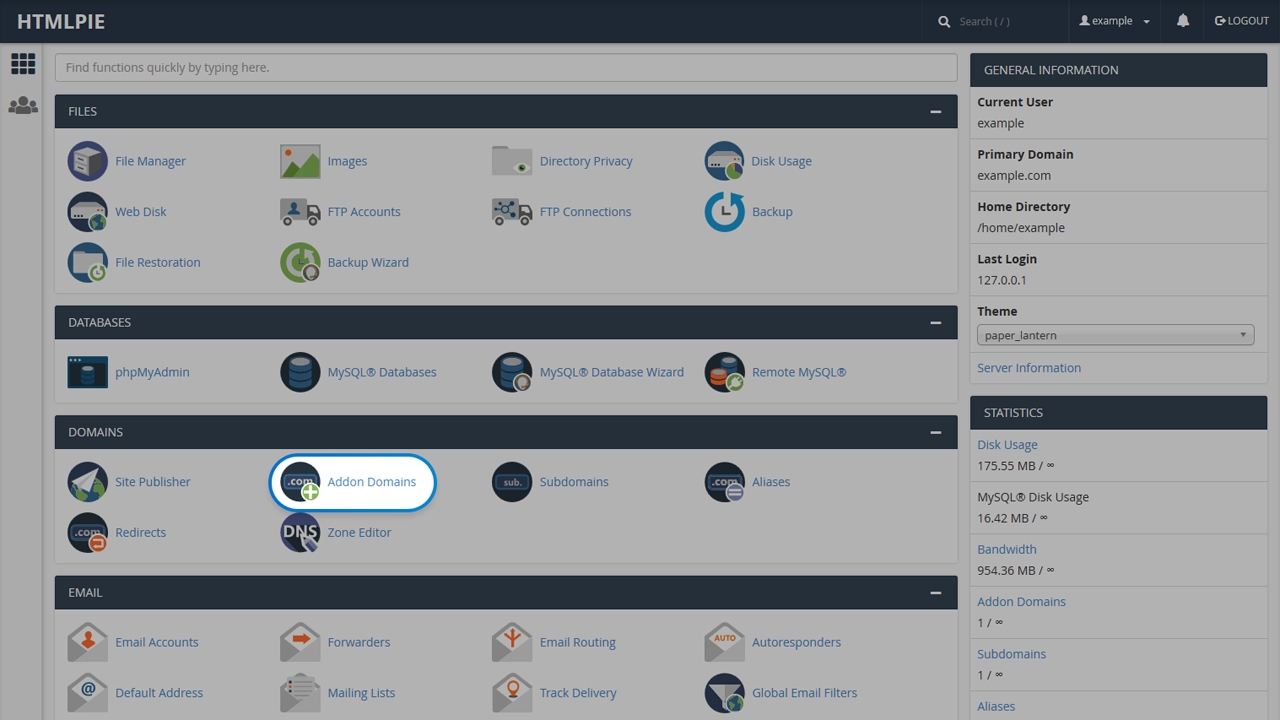
4. Typically, you would park your domains through the "Aliases" section.
However, in two situations you may need to add them as "add-on" domains; through the "Addon Domains" section.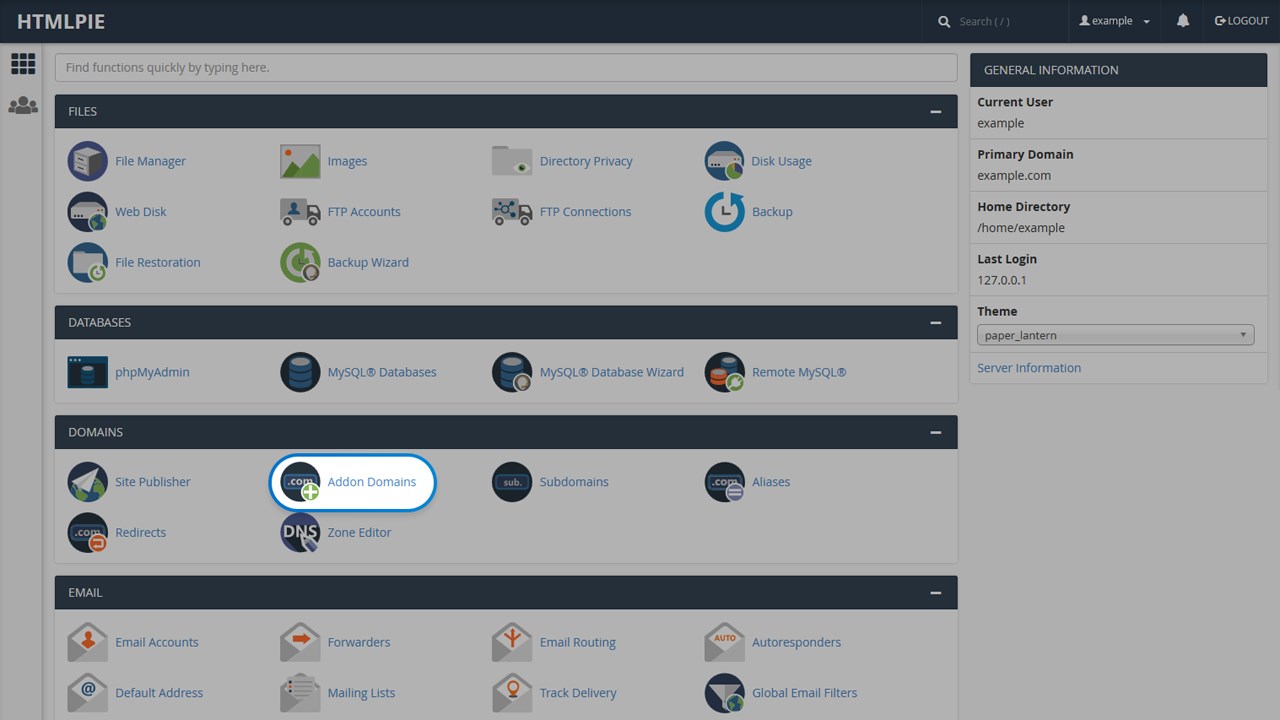
5. Either the domain on which your WordPress is installed is not the same as the primary domain of your cPanel; which means the main WordPress domain is an addon itself. Or, you are going to use SSL for all your domains, using LetsEncrypt.org.
In either situation, you'd need to add your domains as add-ons.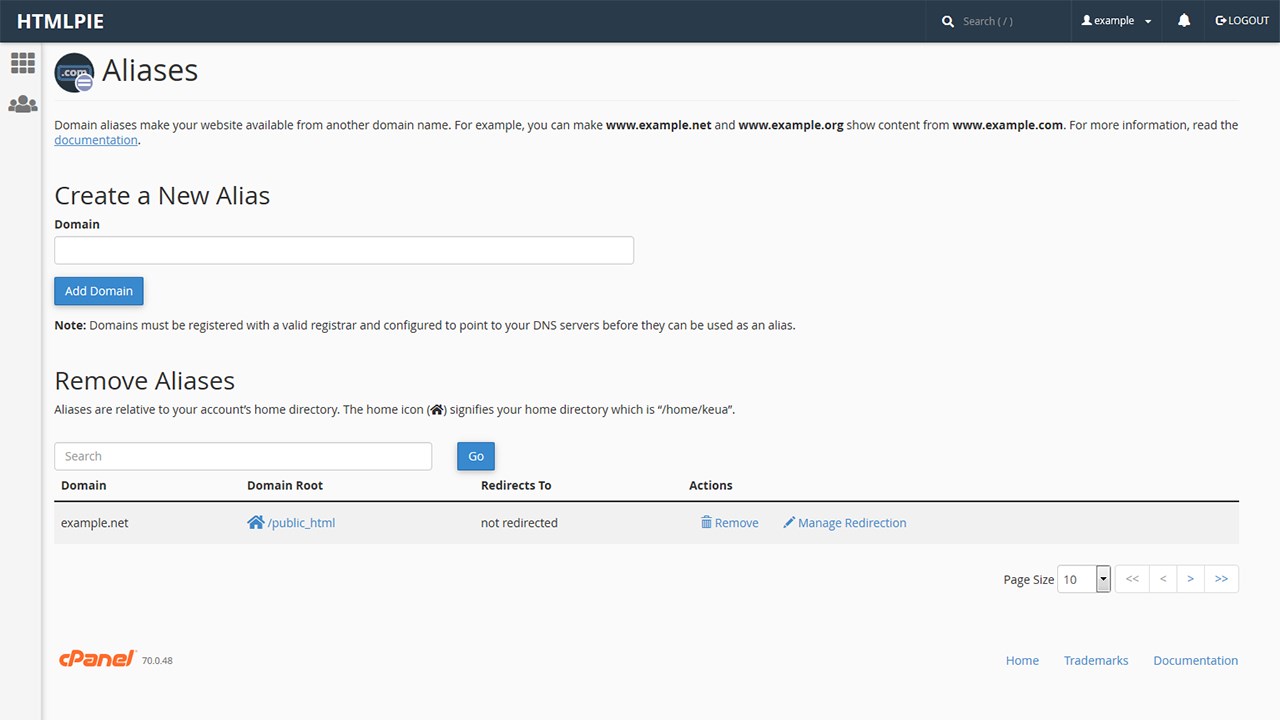
6. Let's first see how Aliases should be created.
You can see we already have an alias, it is "example.net," which means when visitors go to example.net they will see the content of the primary domain, which is example.com, while in the address bar of their Web browser they would still see the example.net as the domain name of the website.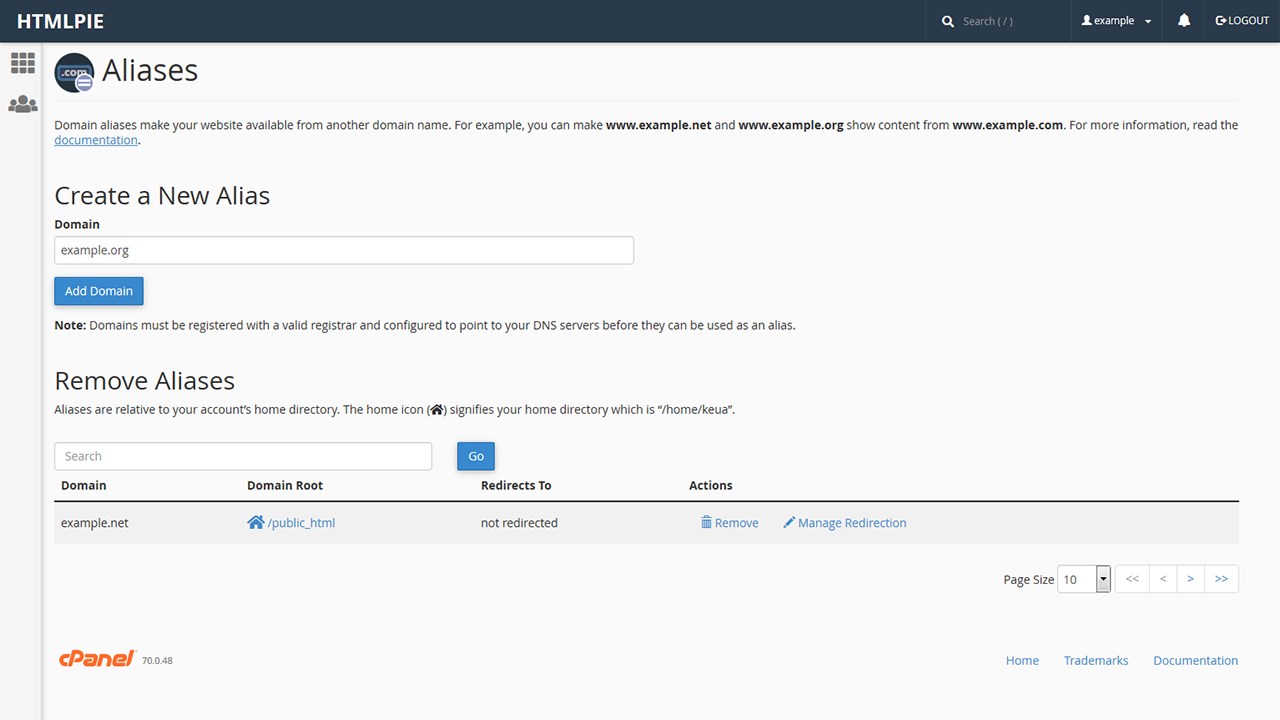
7. Ok, let's add a new alias.
Enter the domain that you want to park and click the "Add Domain" button.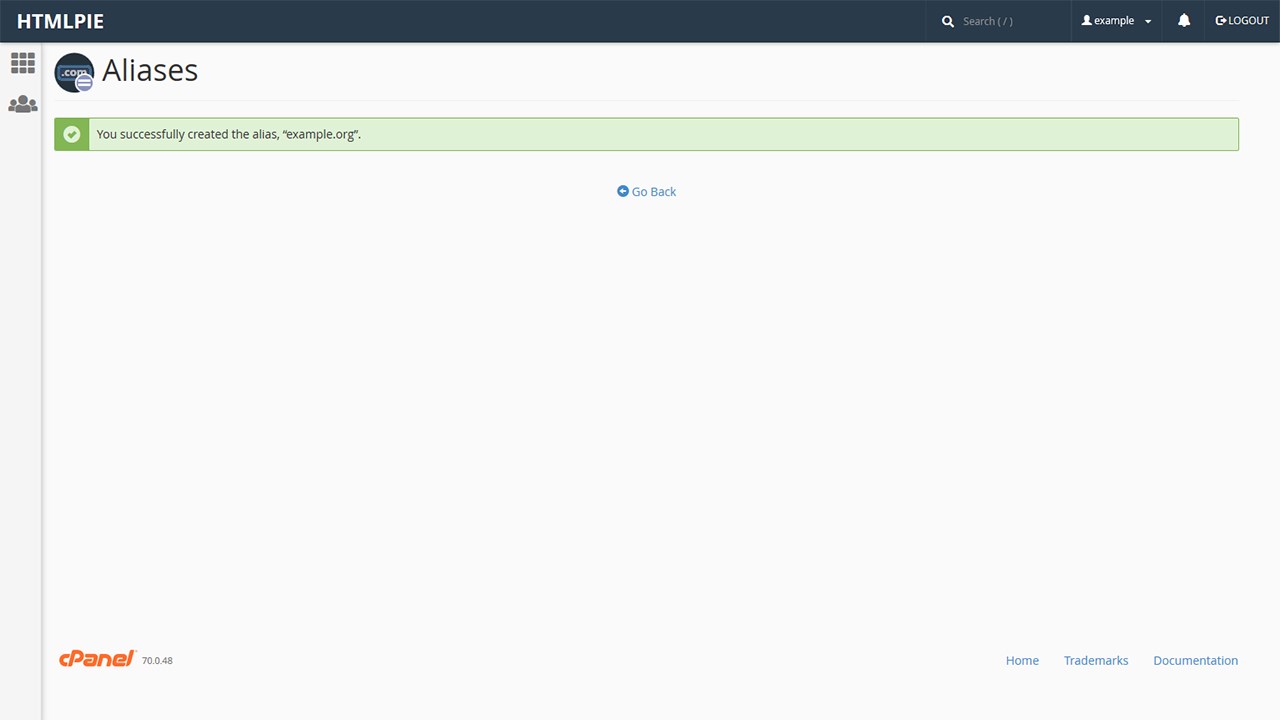
8. Example.org has been added, and it is now an alias of example.com.
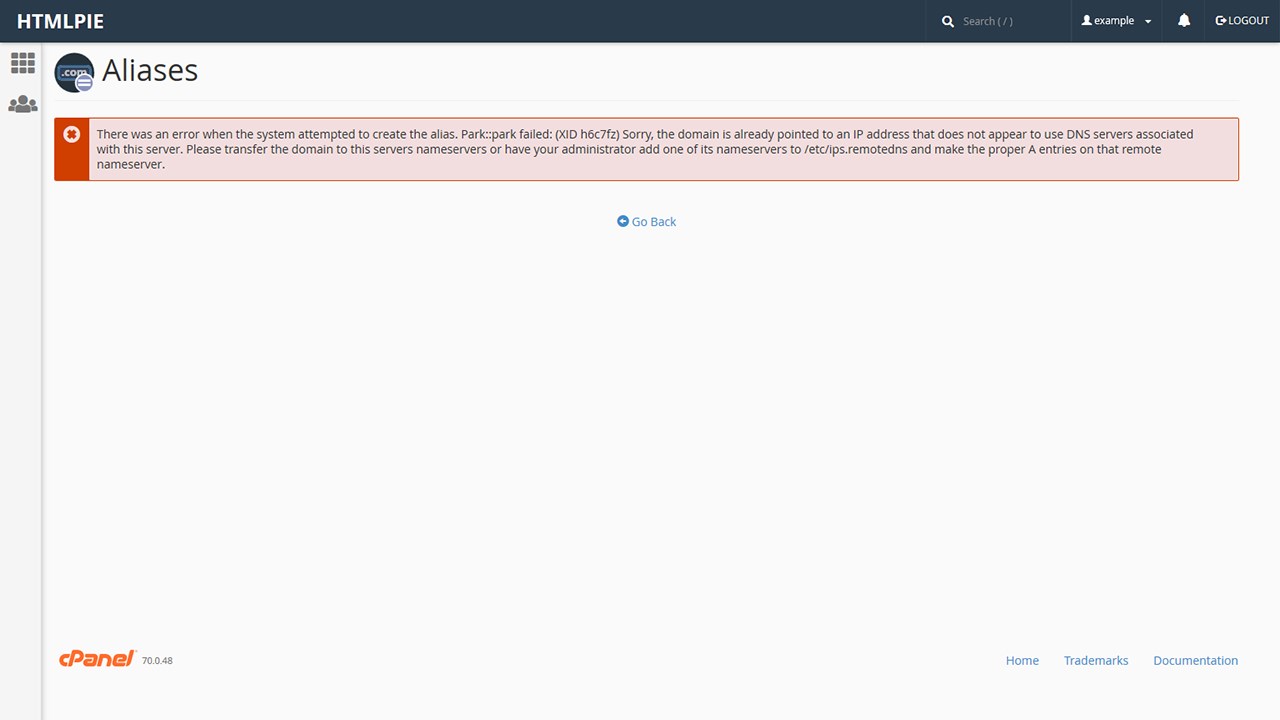
9. Of course, if the name servers of the example.org were not the same as those of the example.com, you could only get such an error message.

10. If you want to know how to change the name servers of your domains you should talk to your domain registrar or your web hosting company, depending on where you registered your domains.

11. Let's go to the "Addon Domains" section and see how things work over there.

12. We have 3 form fields here, but we only need to fill the first one.
As soon as you enter example.org, cPanel automatically generates a subdomain name and a directory path or "Document Root."
13. You can leave the subdomain as is, but you have to change the "Document Root."
Because the WordPress domain is also the primary domain of this cPanel, and it is pointed to /public_html, all we have to is to remove the last part of the automatically-generated "Document Root", leaving only the /public_html in that field.
14. If the domain where WordPress is installed, was an addon domain itself, and its root directory was for example /public_html/my_new_website, We would have written exactly that in there as the "Document Root" of the example.org.

15. We have an "Add Domain" button here too, click it and we are done.

16. Now, example.org is an addon domain of the example.com, however since it has the same "Document Root" as the example.com, it works just like an "alias," and as soon as you issue a new LetsEncrypt SSL certificate, the example.org will be covered too.

1. Login to your cPanel through /cpanel, e.g. example.com/cpanel